Damp Survey Cost
Last updated 30th January, 2024
What does a damp inspection cost?
Are you wondering how to check for damp? If you think this then you may need a damp specialist to complete a damp and mould survey. This article outlines all you need to know about having a damp report completed and the charges you may incur.
Let's begin!
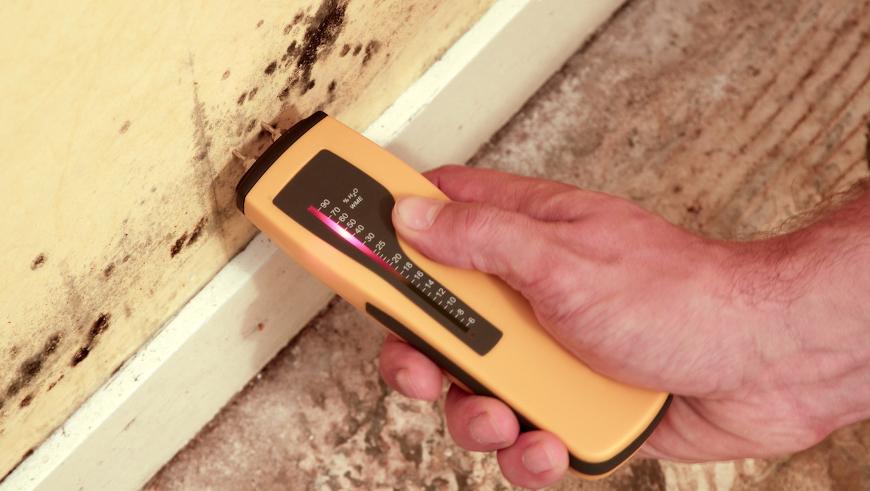
How Much Does a Damp Survey Cost?
The average cost of a damp survey for a 3 bedroom, semi-detached home is around £250.
If your home is a little larger, for example, a 4 bedroom detached building, the average cost could take you up to £400, and something a little smaller, such as a 2 bedroom flat, may take the pricing down to around £200.
The pricing of a bungalow home could be anything from the lower pricing to the higher, depending on the size of the building and the number of rooms.
The damp and timber report costs for your home largely depend on the size of the structure, and the number of rooms within it. Homes with more rooms and more floors will increase the pricing due to the length of the survey and the materials needed.
Buildings such as detached homes tend to be larger than semi-detached structures and flats; therefore, these will see an increase in price.
Pricing factors also depend on the location of your home. Homes in the south, for example, London, will be a little pricier than homes in other areas of the UK due to the cost of living being higher in these cities.
In these cases, costs for a damp survey could rise to around £350. The opposite goes for cities in the North where the cost of living is lower, such as Newcastle and Durham.
You may find damp survey prices for around £150 in these locations, depending on the size of the structure. The extent of the damage caused by damp in a building will also have an effect on the costs.
The larger the areas of damp and the more integrated they are into the structure; the more work will need to be carried out to survey and resolve the issues.
Damp Survey Prices
Below are some estimated costs to fit a new staircase including hiring a specialist to supply and install different types of staircases with 13 200mm steps.
| JOB DESCRIPTION | AVG. COST | DURATION |
|---|---|---|
| Damp Survey 2-Bed Flat | £200 | 1 Hour or less |
| Damp Survey 3-bed Terraced House | £250 | 1-2 Hours |
| Damp Survey 4-Bed Detached House | £300 | 1-2 Hours |
Additional Costs
After damp survey costs, you may need to resolve issues with damp and damp-proof your home. This would include removing the damp areas and waterproofing them before replacing them.
Specialists remove damp plastering or flooring and inject a waterproof liquid into the area before re-plastering over the top.
The average prices for damp-proofing a 2 bedroom terraced home are as follows:
Damp-Proofing
The costs for the materials to damp-proof your home, such as the waterproof liquid used to create a waterproof barrier under the plaster costs on average £840.
Tradesmen
The average costs for hiring tradesmen to damp-proof your home is on average £1260.
Plasterers
The average costs to hire plasterers to re-render and plaster the walls is on average £2100.
Cost Breakdown Calculator
Individual costs for a damp survey in a three-bedroom semi-detached house - Total Cost: £250
Materials
£12.50
Labour
£237.50
Waste Removal
£0
Labour Costs and Time Frames
Damp inspection costs for a damp survey are on average around £250.
However, subject to the type and size of the home you live, and the location you are situated, this may change. All costs are included in the pricing to assess your home; however, if you need any work done to fix damp issues that the surveyor may find, this will cost extra.
A full survey should only take up to 2 hours; however, some can take up to 4 hours depending on the size of your home, the ease of access and the extent of the damage. The surveyor will spend the first part of the assessment checking the perimeter of the exterior of your home for issues that may cause damp to penetrate the walls.
They will then move onto the inside of the property and carry out a full assessment of the interior walls, flooring and ceiling for any issues.
Table of Contents
- How much does a damp survey cost?
- Labour costs and time frames
- What is damp?
- Cost affecting factors of a damp survey?
- What does a damp survey entail?
- DIY damp survey
- What are the benefits of a damp survey?
- What does a damp survey show?
- Do I need a damp survey?
- Cost of removing damp
- FAQs
- How to find & hire a damp surveyor
- Sources
What is Damp?
Damp is the presence of excess, unwanted moisture in your property.
The discovery of damp in your home or building is never something that is welcomed with open arms. Damp walls or areas of a building can lead to all sorts of structural issues and damages throughout your home.
Damp can be caused by a number of issues. However, the three most commonly known are condensation and poor ventilation within your home, a leak in the roofing or structure of the home, or rising damp.
Condensation Damp
The most common out of the three is condensation damp. This type of damp is caused by an excess of water vapour in the air of your home. This excess moisture could be caused by many factors, such as extremely humid weather, a lack of ventilation systems within the home, central heating, or even cooking.
Condensation occurs when humidity within the home hits a cooler surface and converts to water droplets. Quite often, you will not experience condensation during the summer months as we tend to open our windows and turn off our central heating systems.
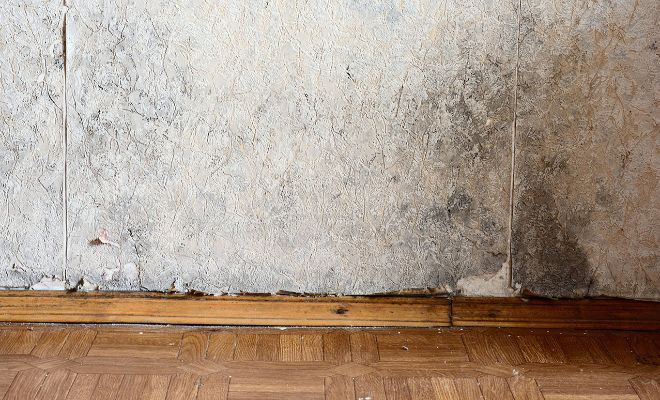
However, when the winter months roll around, we start to see the issues arise.
In order to avoid condensation damp, ensure you keep your central heating usage to a minimum, open windows from time to time to allow airflow through the home, and install sufficient ventilation systems to direct the water vapour outside.
Double glazed windows are another option to decrease the amount of condensation in your home. Single glazed windows tend to be cooler, so you will often see water dripping down onto the walls below, whereas double glazed windows stay a lot warmer; therefore, the water droplets aren't attracted to the surface.
Rising Damp
Rising damp is a lot less common than condensation damp. However, it can be prevalent in wetter areas of the globe. Rising damp occurs when extra moisture from the ground underneath the building is absorbed by the structural materials.
Once this begins to happen, the more porous materials surrounding it begin to soak up the water, causing it to travel further through the home. Usually, you will be able to detect this time of damp by stains appearing on plastered walls, wallpaper beginning to peel, or plaster crumbling.
This kind of damp doesn't happen very often. However, when it does, it can be extremely difficult to resolve and very costly. The reason it can become so difficult to fix is that most of the time, it is not only the surface layer of the wall that is affected.
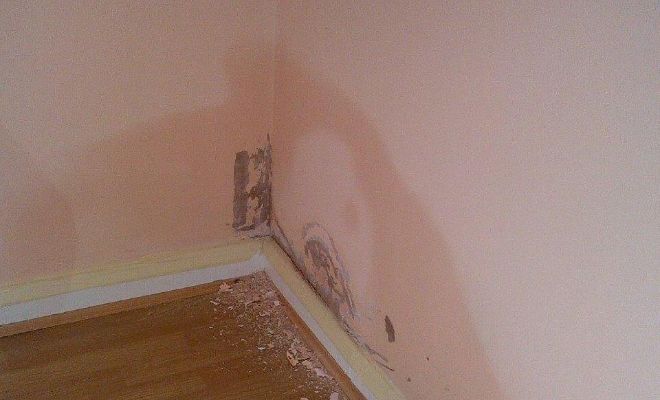
The damage usually comes from the materials within the structure of the building, resulting in the brick and timber framing being affected as well as the plastering and more.
Most homes are designed to repel water to prevent rising damp from occurring. However, older homes may not have this extra protection. Waterproof materials such as bitumen are used in newer buildings to prevent water from the ground from rising to the level of the home.
Sometimes this system can fail. However, this is very rare.
Leakages
Another extremely common form of damp in homes and structures are caused by leaks. Leaks happen when there are gaps in the structure which allow water to penetrate through into the building.
Leaks can be caused by many different factors, such as faulty roofing, cracks in walls, porous bricks and structural materials, faulty guttering, problems with cavity insulation and more.
The older the home, the more likely you are to experience some sort of leakage. However, it is very important to make sure you hire professionals to put sufficient protection in place to avoid leaks from occurring.
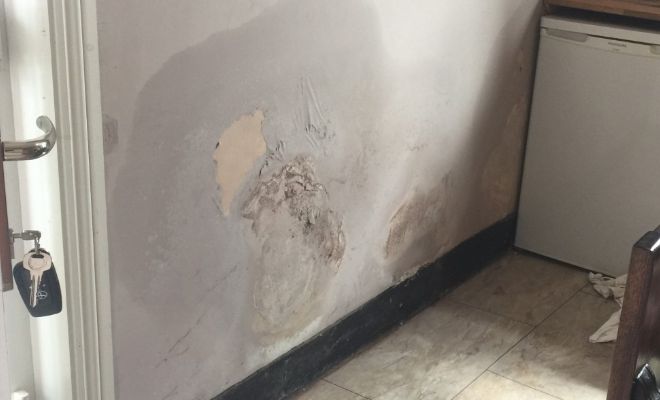
When installing new roofing, materials such as bitumen can add an extra layer of protection to your home, preventing water from entering through gaps in the roof.
The first sign of a leak is most commonly in the form of watermarks on your walls or ceilings. The watermarks will grow as more and more water enters the home and the spread of damp worsens.
Potential Hazards Caused by Damp
The most common issue when it comes to damp is mould. Damp walls left untreated can very quickly begin to become a breeding ground for mould and mildew.
This can become a huge problem for both the structure of your home and your health. Damp can cause many structural issues within your home, which can be extremely costly to resolve, such as crumbling plastering, peeling wallpaper, cracks and holes in walls, dangerous electricity issues.
Extreme damp can cause severe structural issues once it reaches the interior materials of your walls and flooring. Once damp reaches areas such as timber framing and such, it can begin to rot away, which can become a serious hazard for the stability of your home.
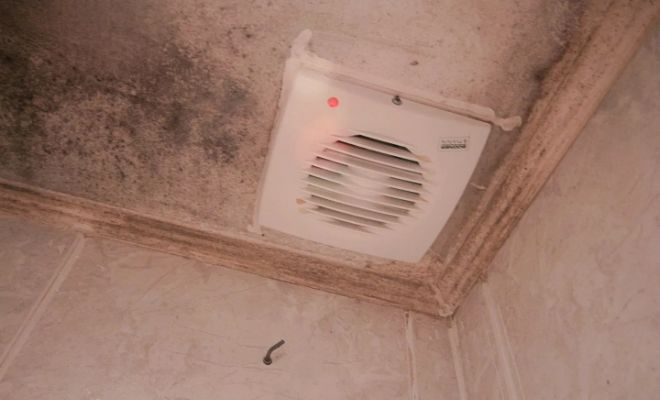
As well as causing structural damage, damp can also have a serious impact on your health and wellbeing. Mould, rot and mildew left untreated could cause issues such as skin irritations, eye irritations, coughing, wheezing, and lung irritation.
This can be especially dangerous for those who suffer from medical conditions such as asthma, a weakened immune system or certain allergies. It's incredibly important to hire a professional to conduct a Damp Survey.
Doing so can help to prevent any future issues regarding damp and can aid to identify areas of concern and prevent them from growing into a bigger issue further down the line.
Cost Affecting Factors of a Damp Survey
There are many different factors to consider when estimating the cost of your Damp Survey. Some of which can keep your survey pricing low, and some of which can add on a little extra.
Here are some factors to keep in mind when estimating how much your survey may cost:
Type of House
The type of home you live in can have a direct effect on the price of your survey. If you live in a flat, you're likely to pay the lower end price for a damp survey.
Whereas, those who live in a multi-storey home such as a 4-bed detached house would be looking at paying more. The extra amount depends on the location you live in, or how big the house is.
Size of House
The size of your home will definitely have a direct effect on the pricings of carrying out a damp survey. The larger the home, the pricier the survey will be, due to the time it takes to survey the building.
If your home is smaller, it will be on the lower end of the pricing scale. The more rooms the surveyor has to analyse, the more the survey will be.
State of Damp
If your home has minor issues with damp, the survey will be quick and simple. However, if you have noticed that your building is having complex issues, the damp survey may require a more in-depth check with the use of extra tools such as thermal device imaging.
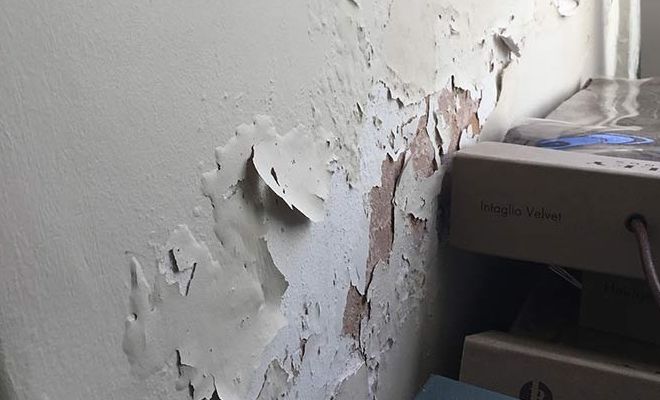
Buildings that require more in-depth checks will take longer to find the root cause of the damp and find the solution. Therefore, the cost will amount to higher than the average home.
Location of Property
Different areas have different costs of living, meaning that a damp survey could be more or less than the average cost to carry out.
Homes in the south of the UK tend to be higher than the average cost, for example, homes located in London. In London, the cost of living is higher, and people earn more to counteract this.
Homes in the north of the UK are a lot cheaper to purchase, and the cost of living is lower. As a result of this, conducting a damp survey may cost lower than the average.
Ease of Access
During the damp survey, the surveyor has to check the entire perimeter of the home to look for issues that may already or could potentially cause damp issues.
If the home cannot be easily accessed, your survey may take longer than the average damp survey.
You can expect the average damp survey to take no longer than 3-4 hours; however, if your home has vital areas that are difficult to access, this may increase the time and costs.
What Does a Damp Survey Entail?
Here is what you can expect from a damp survey:
Arrival
On arrival at the property, the surveyor begins to take a look at the property as a whole.
They will take a look at the structure and determine how old the building is and what possible issues of damp they may find in this type of building.
Introduction
When introducing themselves to the owner of the building, the surveyor will ask some questions about the property.
For example, if the owner has noticed any specific areas of damp already, and if the property has undergone any damp proofing prior to this survey.
The surveyor will also have a form already filled out by the owner of the property with extra information regarding the property that would have been previously discussed at the time of the booking.
External Survey
The surveyor will then begin to carry out a survey of the exterior of the home.
They will examine different factors, such as whether there is any existing damage to the outside of the property that may be causing water to enter the home.
The surveyor will check windows and doors for gaps and guttering in case there are any faults. They will examine walls for cracks and faults in construction, and anything else that may cause damp to enter the home.
This part of the survey should be pretty quick; the surveyor will take notes of any faults or potential issues they find before moving on to the interior.
Internal Survey
After completing the external part of the survey, the surveyor will move on to the interior. The surveyor will firstly identify any areas which could be under risk from damp, judging from the outdoor part of the survey.
Once these areas have been assessed, they will move on to the rest of the home. They will assess the inside of property both visually, and by using a device known as a 'damp metre'.
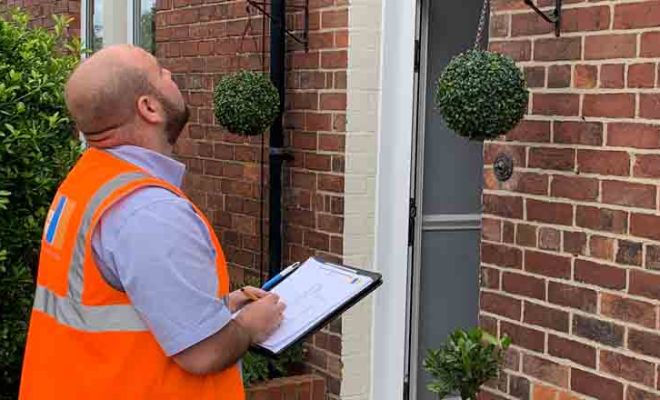
A damp metre is a device used to check areas where damp cannot be seen visually penetrating the walls, however, may pose a risk under the surface.
Often damp can take a while to penetrate a wall, and this device can help to identify if the area is susceptible to damp penetrating all the way through. This device can detect areas of damp that are not visible to the eye and helps in determining what the next step to take would be.
Other Steps
Sometimes, a damp surveyor may also use a thermal imaging device which can help to identify the root cause of the damp if it is not already obvious. By doing so, the surveyor can come up with a plan of action to resolve the issues.
Damp Report
Throughout the entire procedure, the surveyor will take notes of all areas of damp, and areas with potential to become a problem in the future. They may also take photos of the property and draw up details of the home.
After the survey is completed, the surveyor will write up a more detailed Damp Report, which will highlight the problem areas and issue the best recommendations to resolve the problems they have found. This Damp Report may take a few days or weeks to be completed.
DIY Damp Survey
Although you can conduct your own damp survey, it is highly recommended that you leave this job to the professionals.
The main danger of carrying out your own damp survey is that there is a high possibility that you may miss something vital that a professional would recognise as an issue.
Missing even the smallest sign of damp in your home could result in major damp issues in the future, that may cost a small fortune to resolve. It's better to seek the help of a professional and pay a few hundred now than to risk doing it yourself and racking up thousands of pounds in the future.
If you are determined to do your own DIY damp survey, going off what you can see with your eyes could leave you at risk. You may want to invest in some tools such as electronic moisture metres which can read the level of damp in a wall where you may not yet see damp.
However, high-quality tools like these can cost upwards of £100 (many even costing £400+), and by this point, it is already more cost-efficient to hire a professional surveyor.

Parts that may be easier to assess on your own are obvious issues on the perimeter of the building such as cracks and loose brickwork, which may allow damp to penetrate through to the inside.
You can also look for signs of the walls and ceiling having cracks or darker patches that may indicate an issue of damp and make a note of them.
When buying a home, you do not need to hire a professional to conduct a damp survey. However, it is highly recommended that you do. If you are borrowing to pay off your mortgage, you are highly advised to seek the knowledge of a professional to minimise the risk of discovering issues of damp in the future.
There are some things you can do yourself when looking at a home, such as checking the floorboards, bathroom, walls and ceilings, water heater and basement.
Make sure you stay alert to any odours in the home - if something smells musky, there may be a damp issue somewhere in the building.
What are the Benefits of a Damp Survey?
There are multiple benefits to hiring a specialist to carry out a damp survey on your property.
Some of these benefits are as follows:
Saving Money
The main benefit of hiring a damp surveyor is the potential to save money in the future.
If you spot signs of damp, or you are a new homeowner, looking to buy a home, or looking to take out a loan to pay your mortgage, hiring a damp specialist can greatly reduce any potential risks of structural damage within your home.
By checking your property, or the property you are interested in purchasing now, you are eliminating any risks of having to spend a small fortune fixing further issues in the future.
Protecting your Property
Most homeowners love their home, and the thought of anything happening to it is upsetting.
Ensuring you hire a professional to conduct a damp survey means you are taking care of your home the best you can and reducing any risks that may ensue in the future due to potential damp issues.
Keeping a Clean Bill of Health for your Home
Quite often, people wish to upgrade or move to another area after a while of living in their home.
Carrying out a damp survey can increase the interest in your home, as potential buyers will be able to see that the property has a clean bill of health, and any issues were resolved immediately.
This can help you to sell your home more quickly, and maybe even increase the asking price a little.
Reducing Risks for New Buyers
When falling in love with a property and wishing to put down a deposit on your new home, you may want to hire a surveyor to take a look first.
Sometimes, a home could look perfect on the outside but could be struggling with some serious issues that we cannot see.
Hiring a specialist to assess the home could give you peace of mind that the property you wish to buy is safe from damp or could warn you away from a dodgy sale.
What Does a Damp Survey Show?
After a specialist carries out your damp survey, they will write up a damp survey report.
This is a collection of the findings from your home, together with some solutions to resolve them (if needed).
Here is what you will usually find on a damp survey report:
Introduction
This section will explain the methods that have been used throughout your property and will explain what the severity of the damp findings in your home may mean.
This prepares you to have some more understanding of the following sections of the report.
The Subject Property
This section is an in-depth report of the layout of the home. It will discuss the structure of the property, including the roofing, walls and flooring, as well as how many floors and room the home consists of.
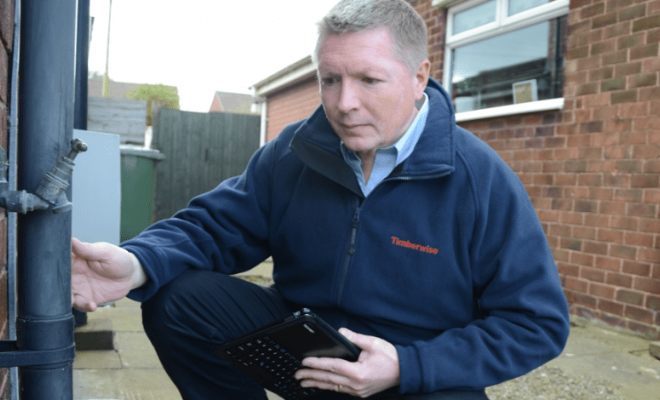
It breaks down the materials of each and also discusses how old the home is, and the conditions at the time the inspection took place.
Findings and Recommendations
This section will break down all findings from the time the survey was conducted.
The damp specialist will include all signs of damp on the exterior and interior of the home, as well as possible issues which may cause damp in the future.
The specialist will include recommendations to resolve each issue and will add the severity of the issue and how urgent resolving the issue is.
Conclusion
This section will explain a round-up of the damp surveyors most important findings and recommendations for the property owner.
The damp survey may also include sections such as 'areas not able to be inspected', any 'further investigations' and a section certifying that the surveyor assessed your home and acknowledging that the findings are correct.
It may also include some background information on damp in buildings, and terms and conditions.
Do I Need A Damp Survey?
A damp survey can be a great tool to give you that peace of mind for the future.
For those who are looking at putting the initial deposit down on a new home, or are loaning money to pay off your mortgage, you are highly advised to hire a damp surveyor to analyse for any risks beforehand.
Homeowners who have not yet conducted a damp survey on their home, this also may be a good option for you, to catch any issues before they grow into a hazard or to keep those nervous thoughts at bay.
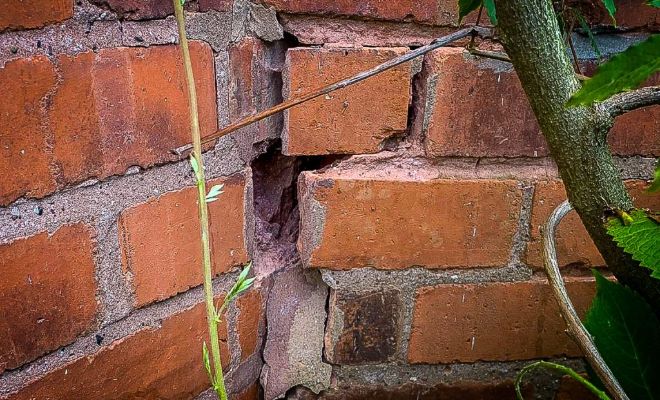
On the other hand, if you have already noticed potential signs of damp, you may want to enlist the help of a professional as soon as possible to catch the issue before it develops further. Potential signs of damp can be:
- A damp, musky odour in your home.
- Darker patches appearing on your walls or ceilings/uneven colouring.
- The presence of mould in areas of your home, most commonly the walls.
- Peeling wallpaper or cracking plaster.
- Excessive condensation on the windows in your home.
- Cold, or damp feeling walls, ceilings or flooring.
If you notice any of these issues in your home, no matter how small they may seem, it is best to seek the help of a professional damp surveyor sooner rather than later.
Damp can spread rapidly throughout your home, and the longer you leave it, the more damage it will cause.
Cost of Removing Damp
Removing damp entirely is the best step to take once you spot signs that may cause issues. Leaving small areas of damp may seem harmless, but these small areas can become large and hazardous issues over time.
A small crack or dark spot on a wall could result in a crumbling and unsteady wall if the damp is left to become severe. Damp-proofing costs vary depending on the extent of the damp, and the type of damp you are dealing with.
If you are struggling with excess condensation in your home, you may wish to install a ventilation system to combat this. Ventilation for small issues cost on average £16.50, for a control vent which allows the water vapour a means to escape.
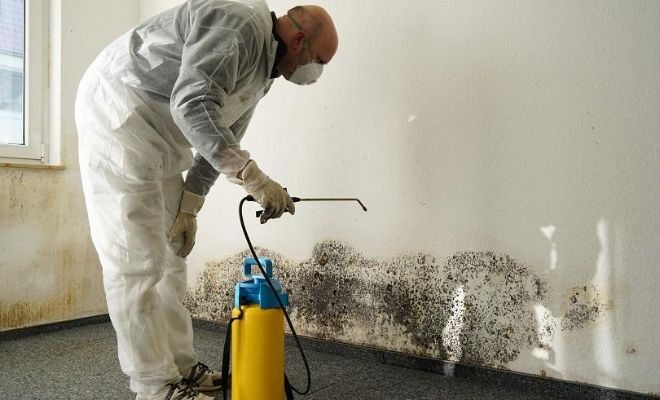
However, if your home is suffering from extreme condensation, you may be looking at paying up to £200 to install a ventilator, or £280-£2000 to apply a new damp-proof course to each wall, depending on the size of your home.
You may also wish to invest in some damp-proof paint for your walls, which on average costs around £6 per litre. However, it may be risky if your walls are already suffering from issues of damp due to the excess condensation.
Dehumidifiers are also a great addition to homes struggling with condensation issues, as they help to remove excess moisture from the air. You can find a good quality humidifier at an average price of £90.
If your home is suffering from issues to damp penetration, you may wish to resolve these issues and then damp proof your home to prevent it from recurring. There are multiple different factors and steps that may make the price of damp proofing your home vary.
The steps professionals will take when damp-proofing a home are:
- A full damp survey with the use of damp metre equipment.
- An analysis of the initial damp proofing.
- Removing skirting boards and plaster.
- Injecting a waterproof liquid into the walls.
- Applying waterproof render and plaster to the walls.
On average, a 2 bedroom terraced home would cost around £4,200 to complete the whole job. A breakdown of these costs would include: Damp proofing at £840, tradesmen at £1260 and plasterers and rendering at £2100. This price is subject to increase or decrease depending on the size of your home, the type of house you live in, and the area your home is located.
FAQs
A breakdown of these costs would include Damp proofing at £840, tradesmen at £1260 and plasterers and rendering at £2100.
This price is subject to increase or decrease depending on the size of your home, the type of house you live in, and the area your home is located.
If you are a new homeowner, are looking at purchasing a home, or are wishing to take out a loan to pay off your mortgage, it is recommended you hire a specialist to assess any risks of damp beforehand.
Damp should be resolved quickly to avoid spread, as it can cause plaster on walls to crack and crumble, and certain structural materials to rot.
Doing a DIY damp survey when you have no previous experience in damp can result in you missing signs that could potentially cause major structural damage to your home.
How to Find & Hire a Damp Surveyor
If you spot some signs of damp in your home, are looking at buying a new home, or are wishing to take out a loan for your mortgage, it may be necessary to hire a damp specialist.
A damp contractor can help spot signs of damp while they are small and give options to resolve them before they grow into a larger issue. Hiring a damp contractor to survey a 3 bedroom, semi-detached home would cost on average £250.
If your home is a little larger, for example, a 4 bedroom detached building, the average cost could take you up to £400, and something a little smaller, such as a 2 bedroom flat, may take the pricing down to around £200.
However, pricing will vary depending on the cost of living in the area you live in. When looking for a damp surveyor, it's important to make sure that they have enough experience in the field.
Look at the individual's background to ensure that they have the correct and relevant qualifications for the job. You should look for:
- CSRT Qualification – Certificate in Remedial Treatment.
- CRDS Qualification – Certificate in Remedial Damp Surveying.
- CSSW Qualification – Certificate in Structural waterproofing.
Whether you are hiring an independent damp surveyor or a contractor, if their qualifications aren't made obvious, you should ask for their background experience and certificates. Most surveyors will include this information on their website, but if it's difficult to find, don't be afraid to ask.
Another way to check the legitimacy of a surveyor is to check online reviews from trusted websites. This way, you can check the experiences that previous clients had with the individual or company and check how far back these reviews date - to be sure of their experience.
You may also want to look out for accreditations that the individual or company may have received. Accreditations are acknowledgements of a person's achievements or responsibilities, or an organisation stating that they recognise the individual or company as being qualified to perform.
If the surveyor you are looking at has any links to associations such as the 'Property Care Association' (PCA), or the 'Basement Waterproofing Association', then they most likely can be trusted especially if they have received any awards from said associations.
Sources
https://www.envirovent.com/help-and-advice/why-ventilate/damp-problems/what-is-damp/
https://www.medicalnewstoday.com/articles/323419#how-dangerous-is-it
https://www.axa.co.uk/home-insurance/tips-and-guides/what-causes-condensation-and-how-to-stop-it/
http://www.damp-proofing-specialists.co.uk/blog-posts/what-is-involved-with-a-damp-survey
https://preservationtreatments.co.uk/what-happens-on-a-damp-survey/
https://dampsurveys.com/what-is-damp-survey/
https://www.permagard.co.uk/advice/how-to-check-for-damp-in-properties-before-you-buy
https://www.confused.com/home-insurance/guides/damp-in-the-home
https://www.richardsonandstarling.co.uk/blog/choosing-damp-proofing-company/
https://www.dampconsultant.co.uk/pdfs/sample-damp-survey.pdf
https://www.comparemymove.com/advice/surveying/damp-survey







